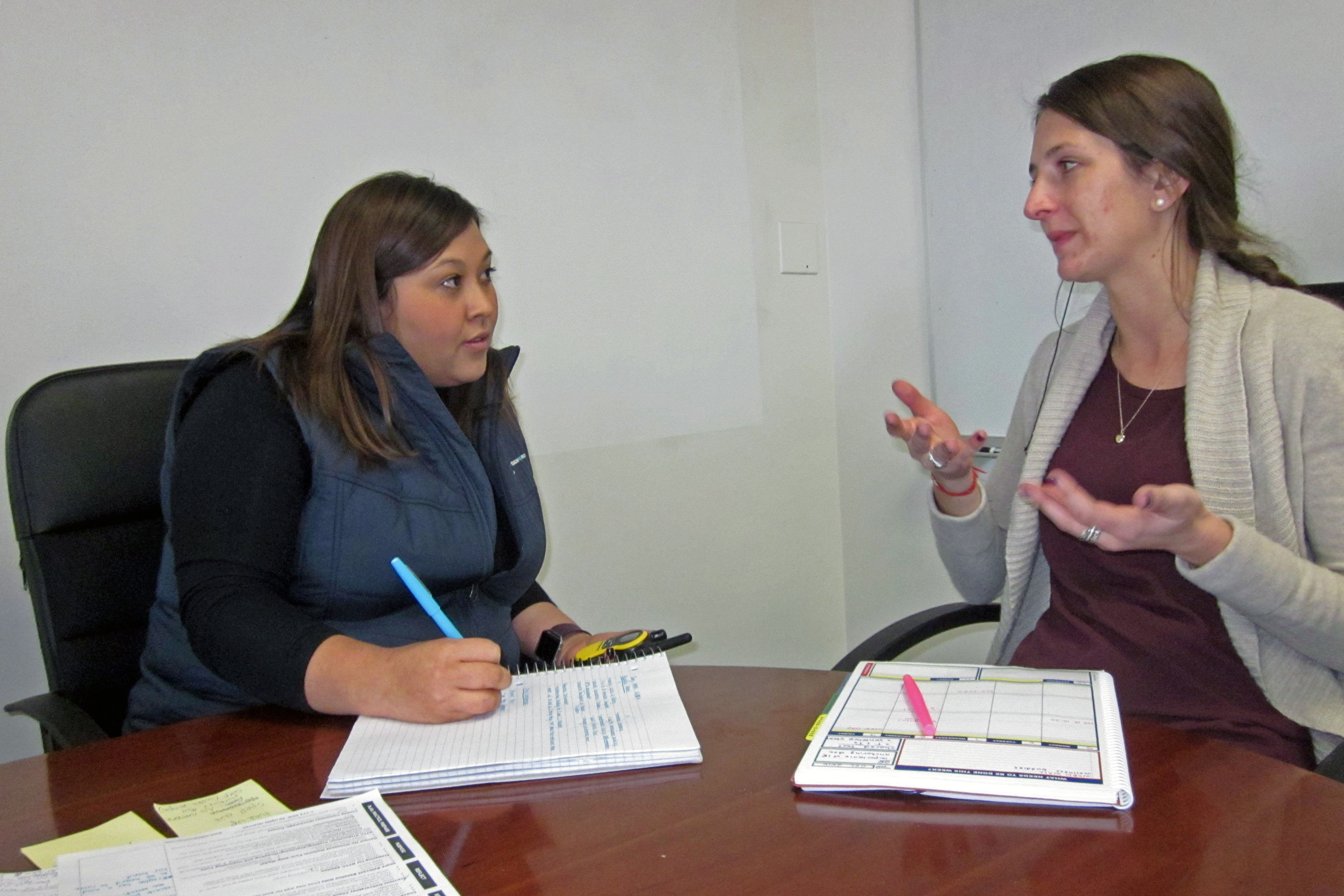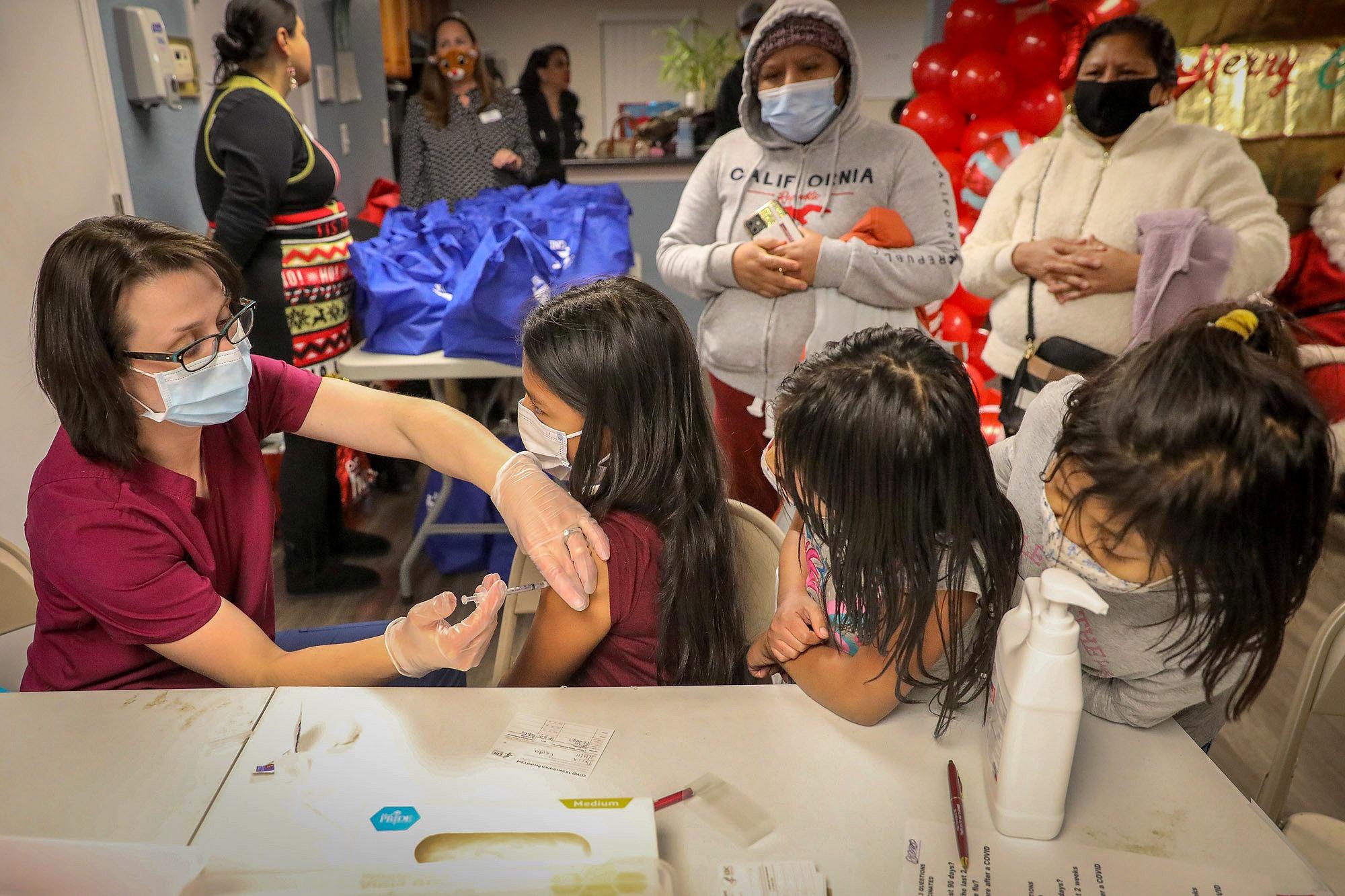
Many teachers burn a lot of time trying to control their classes. When Sara Carlson was a teacher and her classroom was getting a little chaotic, she wished she’d had a little message in her ear like the one she is about to give: “Narrate 3. Consequence 1.”
Carlson, now a coach and director of culture at Rocky Mountain Prep Creekside elementary school, delivers short, concise instructions like that over a walkie-talkie to a teacher wearing an earpiece. Carlson remembers chaotic classrooms where she focused solely on academic targets.
“I was so stressed out about that, that I was just pushing them to ‘listen to what I say, do what I say when I say it’ and they weren’t invested in me enough to want to do those things,” she says of the students.
Carlson’s epiphany was that highlighting the positive things her students were doing might get the ones goofing off back on track. It turns out, that very tactic is part of a teaching methodology developed by CT3, also known as the Center for Transformative Teacher Training. It’s called no nonsense nurturing.
Leah Pearson with CT3 says every minute wasted on a teacher trying to gain control of a classroom means less time for teaching and learning. That’s critical time, especially for students who are two or three years behind academically. She says no nonsense nurturing provides a framework for dealing with all kinds of situations.
“How do I get kids to follow directions? What happens if they touch each other inappropriately? Run out of the classroom? Talk back?” Pearson asks. “Our students don’t have that time or luxury of a teacher to figure it out trial by fire.”
The engagement level at Rocky Mountain Prep has tripled and the school is one of the highest performing, high-poverty schools in Denver. Teachers in 16 Denver schools have received real time teacher coaching via an earpiece. But first teachers are observed.
Coaches watching Cary Meyers’ first grade class saw that about 80 percent of students were engaged in the lesson. They want to bump that number higher. So now, they’re having a pre-conference session prior to her real time coaching using an earbud. They point out the things she’s doing really well. But they also talk about things to work on using the no nonsense nurturing 4-step process.

Sara Carlson, who is coaching Meyers, noticed a moment when a student yelled in class and Meyers said, “‘Braylin please stop talking, that’s disrupting,’ but there was no follow up with a consequence and there weren’t specific narrations prior to that.”
Meyers hadn’t given “narrations,” those are one-line observations about positive things students are doing, followed by a one-line reminder about class expectations. They talk about if she doesn’t hold the child to the same standard as the rest of the class, it gives other students the message that that that child is different or there are exceptions made. Meyers realizes it also sends him the message, “that he can’t do it,” she says.
Then, together they go over cues Meyers might hear in the earpiece and script out what she’ll say for her class lessons. Carlson notes that instead of a teacher’s laundry list that says “here are the things you did well and here are the things that you need to work on” she’s instead able to give the teacher a sentence and “when you say it I want you to watch how the kids respond.”
“Teachers get to feel that,” Carlson says.
Later, in Meyers’ classroom, earpiece in place, she’s using that exact script with her 29 first graders.
“When I’m reading, your eyes are tracking, your lips are zipped and if you get lost you can watch where my finger is to pick up. Who is ready to read?”
The students are supposed to be sitting silently, cross-legged on a carpet. Coach Carlson is at the back of the room whispering short commands into a walkie-talkie. She murmurs to Meyers to “use proximity” to get a student to sit down. On that cue, Meyers simply moves and stands next to the child. He sits down. Meyers continues with her lesson and she’s starting to get the hang of “narrating” at the same time she’s keeping the flow of her lesson plan.
“I see Lillian really thinking,” she tells the class. “Soliana’s hands are glued, Dunya’s eyes are tracking. That’s a class point.”
The kids like that. Individual and class points are part of an incentive system, which is also part of no nonsense nurturing.

To some, the scripted directions can seem robotic. Commands are crisp and emotionless. Critics of the training, say the method is too focused on compliance. The Center for Transformative Teacher Training's Leah Pearson says not so.
“We try to train coaches to get the teacher to think about power or purpose,” she says. “Is there a purpose for voices off and being silent or in this case would it be better to have students talk and engage? What’s going to serve them best?”
Back in Meyers’ classroom, the kids discuss what the story means and then almost silently transition into writing at group tables. Meyers begins narrating positive behavior with one consequence at the end.
“Lisandro, your job is to already be writing. That’s a reminder. You’ve got this,” she says simply.
That’s the “public consequence” Meyers was missing before. It’s a gentle, positive way of reminding a student of what they’re supposed to be doing. During the coaching session, Meyers went from 80 percent of the kids actively participating to 95 percent.
“It is not telling me how to teach,” she says. “It’s helping me manage behaviors. Being able to do that effortlessly lets me be more authentic.”
For her, that means really listening to the kids more or letting her own goofiness come out without it derailing the class.









